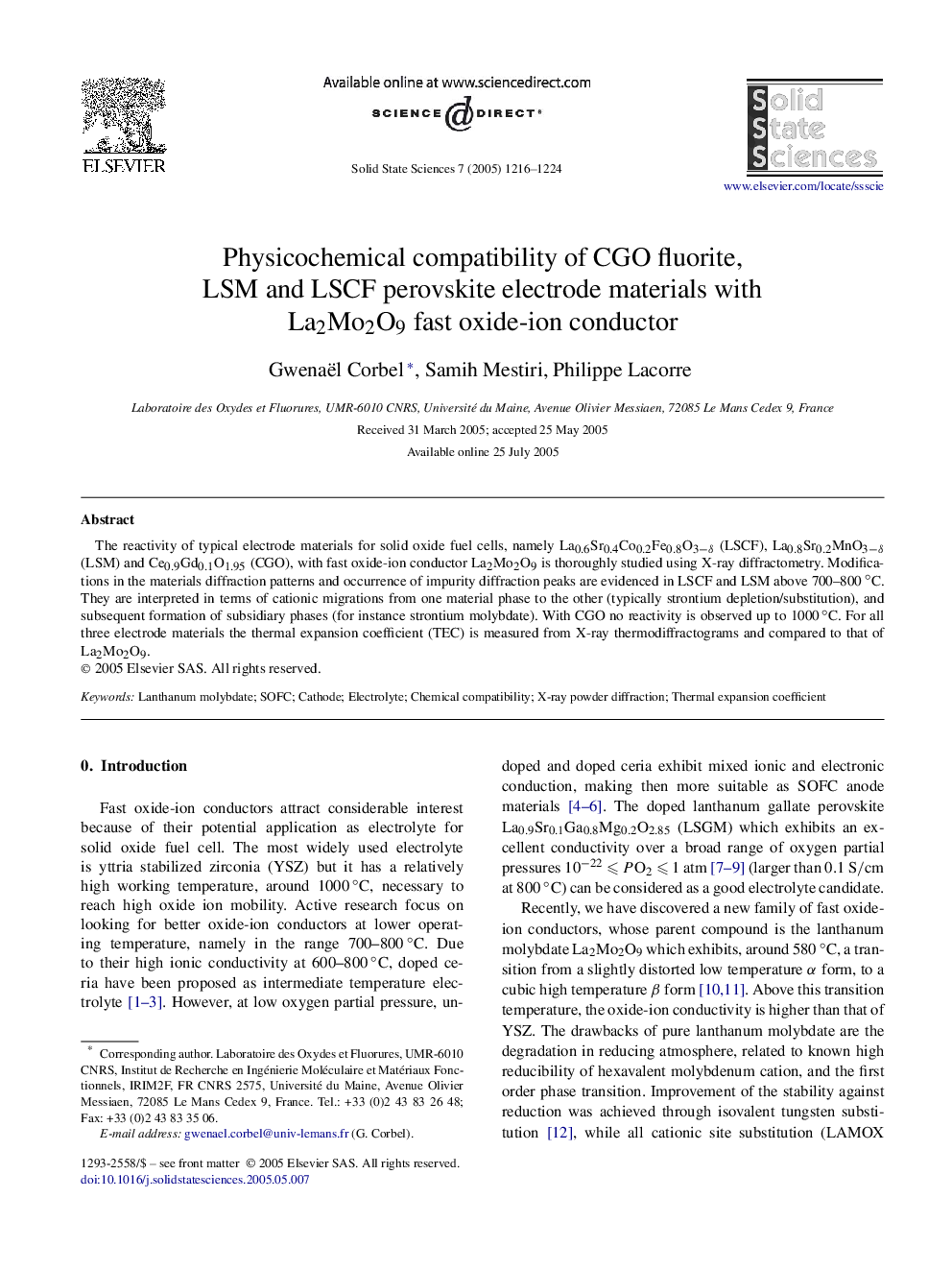| Article ID | Journal | Published Year | Pages | File Type |
|---|---|---|---|---|
| 10636802 | Solid State Sciences | 2005 | 9 Pages |
Abstract
The reactivity of typical electrode materials for solid oxide fuel cells, namely La0.6Sr0.4Co0.2Fe0.8O3âδ (LSCF), La0.8Sr0.2MnO3âδ (LSM) and Ce0.9Gd0.1O1.95 (CGO), with fast oxide-ion conductor La2Mo2O9 is thoroughly studied using X-ray diffractometry. Modifications in the materials diffraction patterns and occurrence of impurity diffraction peaks are evidenced in LSCF and LSM above 700-800â°C. They are interpreted in terms of cationic migrations from one material phase to the other (typically strontium depletion/substitution), and subsequent formation of subsidiary phases (for instance strontium molybdate). With CGO no reactivity is observed up to 1000â°C. For all three electrode materials the thermal expansion coefficient (TEC) is measured from X-ray thermodiffractograms and compared to that of La2Mo2O9.
Keywords
Related Topics
Physical Sciences and Engineering
Materials Science
Ceramics and Composites
Authors
Gwenaël Corbel, Samih Mestiri, Philippe Lacorre,
